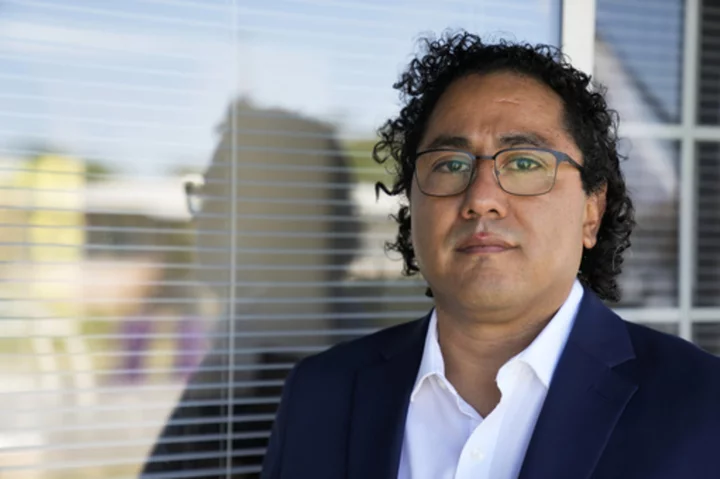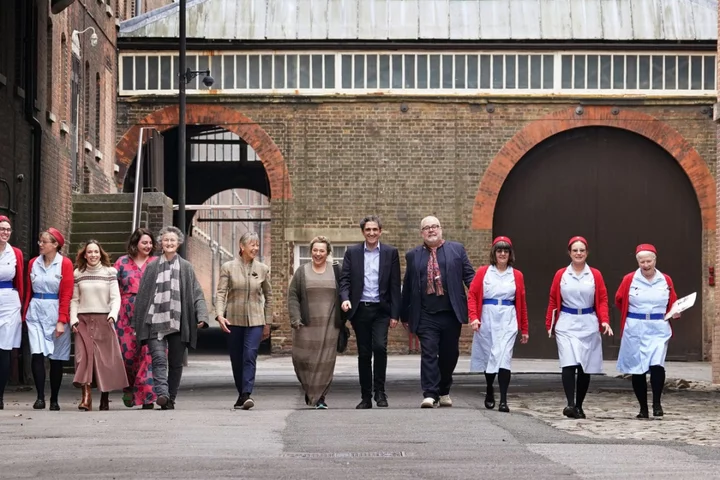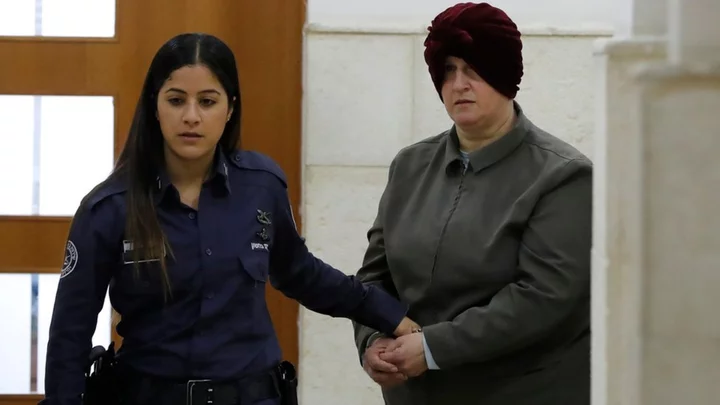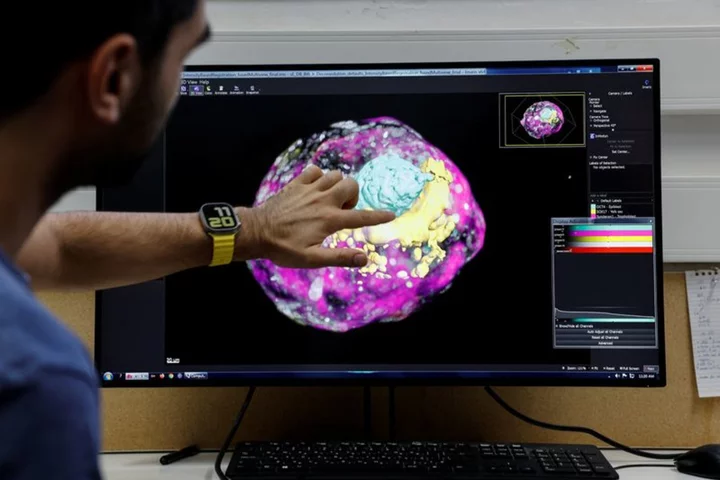LOS ANGELES (AP) — Juvenile offenders in California might now have a better chance at rehabilitation instead of facing a mostly punitive sentence in a youth prison system that often only reinforced the patterns of neglect and violence that led many of them into trouble in the first place.
On Saturday, California shuttered its last three state-run youth lockups and passed day-to-day operations of juvenile halls to county probation departments. The plan decentralizes care of youth offenders and prioritizes keeping them closer to home in facilities focused less on punishment and more on reformation — all in hope of breaking “the school-to-prison pipeline,” as Gov. Gavin Newsom put it in 2020.
But will it be enough?
Advocates say the move away from a punitive approach reflects their belief that children who commit crimes are better served in settings that emphasize education, mental health care and other supportive services.
But supporters and skeptics alike say there is still plenty of uncertainty ahead.
The state-run system had a troubled history marked by inmate suicides and brawls, as well as allegations of physical and sexual abuse by staff members. And more recently, state facilities had been reserved for the worst offenders — young people who had committed murder, assault and other serious crimes.
“At the local level we just don’t have the programs and services, or the culture, that’s ready to handle to the kids with real needs, those dealing with serious trauma,” said Frankie Guzmán, director of the California Youth Justice Initiative at the National Center for Youth Law. He himself spent six years in California’s youth prisons for armed robbery.
Jose, a 21-year-old who spent nearly two years in a state-run juvenile hall in the San Francisco Bay Area, described a facility where classes and treatment programs were frequently canceled because of staffing shortages. Fights were common, illegal drugs readily available and gang members jostled for power in dorms and on yards. He was pepper-sprayed twice by guards while fending off attacks by other youths, he said.
“You got this feeling where you’re not safe and need to watch your back,” said Jose, who asked that his full name not be used for fear of personal and professional repercussions. “You feel like you're always a target."
Jose said he had to navigate a complicated system of incentives and rewards to eventually gain access to behavioral health treatment, schooling and vocational training.
“My mission was to get out of there,” he said. He was eventually granted early release after serving time for a string of offenses including stealing a car and association with a gang — things he said he did after falling in with the wrong crowd after emigrating from Mexico.
Other kids were not as motivated and remained trapped in a loop of acting out and subsequent punishment. The old system wasn’t fully equipped to help young people with anger issues and untreated trauma, he said.
The first California facility for troubled youth — the San Francisco Industrial School — was created by the Legislature in 1859 as an alternative to housing children as young as 12 alongside adults in San Quentin and Folsom state prisons. Two years later, the State Reform School in Marysville opened for boys ages 8-18. At one point, the state system included 11 lockups holding about 10,000 youths.
Today, the youth offender population in the remaining state-run facilities was around 300. Their average age was 19 and in 2020, a disproportionate 88% were Black or Latino.
California counties already handle about 35,000 juvenile offenders — more than 3,600 of them held in juvenile halls, camps and ranches.
County probation departments say they are determined to make the law work despite the challenges of a decentralized system. Officials fear smaller counties could struggle with providing care to youth with serious mental health needs, said Chief Probation Officers of California executive director Karen Pank.
And some rural counties in Northern California will have to consolidate and share facilities.
While California has in recent years ramped up funding for behavioral health, not enough of it flows to young people or the state's 58 county probation departments tasked with handling the new system, Pank said.
“The state must remove barriers and listen to the counties to hear what they really need," she said.
California will send counties about $230 million annually to help cover those costs.
County probation officers, meanwhile, will try to balance reform advocates' focus on rehabilitation with judges who — at prosecutors' request — could still send older teenagers to adult prisons for the most serious crimes.
Still, others believe meaningful change will only happen with robust oversight from the state.
“It’s wrong to think that the state of California can simply move the prison population into the county juvenile hall and we’ll suddenly have a more successful juvenile justice system,” said Meredith Desautels, a staff attorney at the Youth Law Center in San Francisco. Transformation, she said, is only possible if California recognizes it “as an ongoing process that requires ongoing adjustments.”
Oversight of the realigned system will run through the new Office of Youth and Community Restoration, part of the state’s Health and Human Services Agency, instead of the Department of Corrections and Rehabilitation.
That offers little consolation to Guzmán, who fears the new office “has no teeth” and won't be able to provide the oversight the counties need. A bill that passed the Assembly last month seeks to give the office greater regulatory authority, including the ability to respond to reports of abuse.
The state-run system, while far from perfect, had concentrated resources at campuses that could fit schools and vocational training and provide care, Guzmán said.
“Now that we're closing those down, what we're left with are much smaller facilities that lack resources, essentially county jails for young people,” he said.
Katherine Lucero, director of the Office of Youth and Community Restoration, conceded that the counties still have work to do.
Her office has been staffing up internally and establishing relationships with a range of partners including advocates, therapists and attorneys "to ensure youth have a supportive and safe environment as they return to their home communities,” Lucero said in a statement.
Lucero defended her office's relationship with a now-defunct nonprofit established by probation chiefs across California shortly after Newsom’s decision to close youth prisons. The County Probation Consortium Partnering for Youth Realignment, with a board comprised of most of California’s probation chiefs, made recommendations on what resources counties needed.
Critics said the consortium added an unnecessary layer of bureaucracy and secrecy, and the nonprofit was targeted by a lawsuit demanding greater transparency. Late last month, the nonprofit said it would shut down because “the critical need for the consortium has come to an end.”
Jose, the former youth inmate, said when he arrived in lockup as an angry, directionless young man he couldn't imagine the future he has now: employed full time with goals of starting his own business and raising a family.
His main hope for the new system is a major staffing shakeup and a renewed focus on health and wellbeing. During his sentence, he dealt mostly with staff members “who weren't invested, they weren't professionals, they were just there to guard.”
“We need people who want to make it more therapeutic,” he said. “It’s more of learning how to function in a community by replacing negative behaviors with positive behaviors.”









